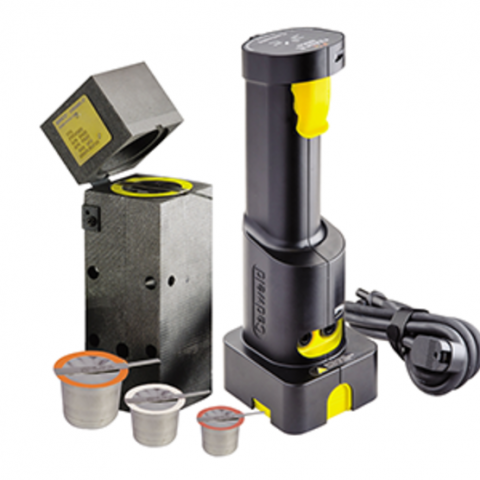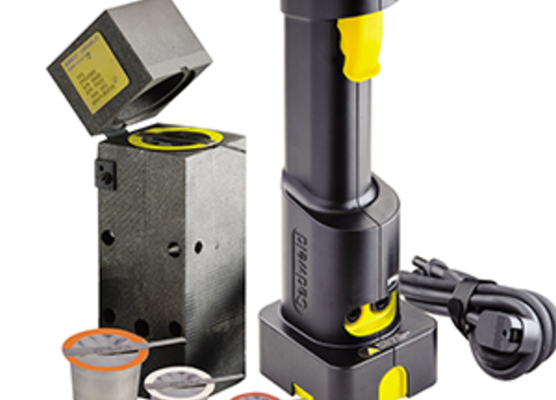nVent is constantly investing, improving and verifying the performance of our products. As the original inventor of exothermic welding for electrical connections, nVent ERICO continues to have the most comprehensive test program for compliance of nVent ERICO Cadweld exothermically welded connections to IEEE Standard 837 2014 “Standard for Qualifying Permanent Connections Used in Substation Grounding.”
IEEE Std. 837 is important to utilities, and the Cadweld brand has always been on the early side of compliance to this standard. IEEE Std. 837 is the only worldwide standard that scientifically establishes a fair methodology to test and evaluate all connector methods to very difficult standards. It is primarily used (and designed for) for utility substation applications, which are arguably the most critical below-grade grounding connections of all. However, because so few grounding standards anywhere actually test connectors like IEEE Std. 837, many engineers use this for other applications.
Cadweld on the Leading Edge
nVent tested connections using AWG 4/0 copper conductors, 4/0 equivalent copper-bonded steel and 19/#8 40% DSA copper clad steel conductors (all of which qualified smaller conductors of the same connection family). All of the submitted connections passed the Mechanical (EMF) and Sequential (Current Cycling, Freeze Thaw, Corrosion Salt, Acid Corrosion and Fault-Current) test requirements of IEEE Standard 837-2014.
>>> Learn more by downloading the bulletin and FAQ below.
nVent has recently completed additional mechanical (EMF) testing for 350 kcmil and 500 kcmil copper conductors. The EMF test is very demanding, with test currents of 65kA and 75kA respectively (175kA and 202kA 1st cycle positive peak current) that result in exposing the connections to severe heat and mechanical energy.
Cadweld products are held to the highest standards to ensure a secure connection in even the most extreme applications.
The Importance of IEEE Std. 837-2014
The purpose of this standard is to give assurance to the user that a connection meeting the requirements of this standard will perform in a satisfactory manner over the lifetime of the installation, provided that the proper connection is selected for the application and that the connection is installed correctly.
The testing standard is very rigorous, including strength of connectors, aging protocols, corrosion testing (salt fog, acid bath), and high-level current carrying (EMF). The latest 2014 changes make the EMF test much more difficult to pass.
Exothermic welding has always been proven to be the highest quality and most reliable connection even according to IEEE Std. 837 standards.
>>> Learn more by downloading the bulletin and FAQ below.
The Language Around IEEE 837-214
We have seen non-exothermic connectors make claims about their products and their “compliance” to IEEE Std. 837. These are usually forms of:
- We are compliant to 837
- Meet the intent
- Tested to 837
But it is worth considering additional questions to really root out the facts about connections. For example:
- Which of those connectors have passed IEEE Std. 837?
- Which of the connection configurations have passed? All or a few?
- Did they pass all the 837 protocols or only some?
- Was the testing done by a third-party lab?
nVent ERICO always makes public what specific connections have passed IEEE Std. 837 testing and by which third-party testing laboratory on our website. Just this past year 2019, we went forward with more extensive testing for larger size welds above the standard 4/0, up to 500kcmil with the most robust EMF testing.
Download the Bulletin and FAQ
Download the bulletin below that includes the product update, the third-party test report and a IEEE Std. 837-2014 FAQ.


